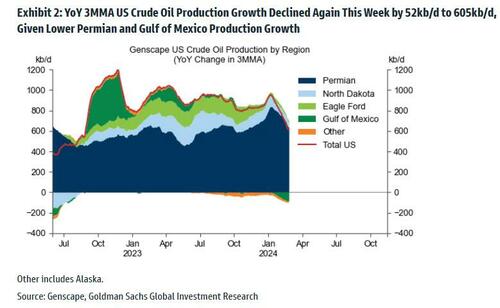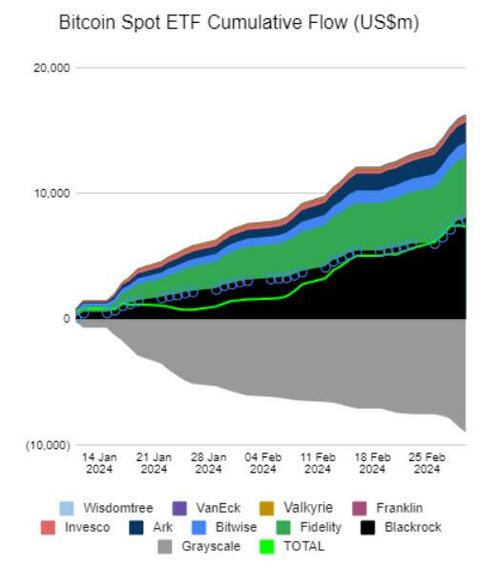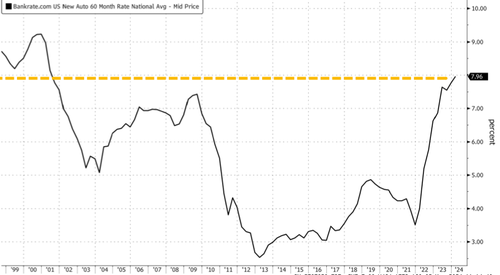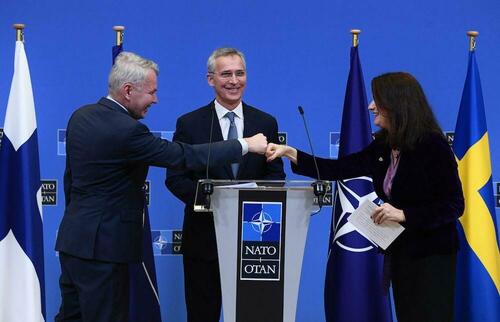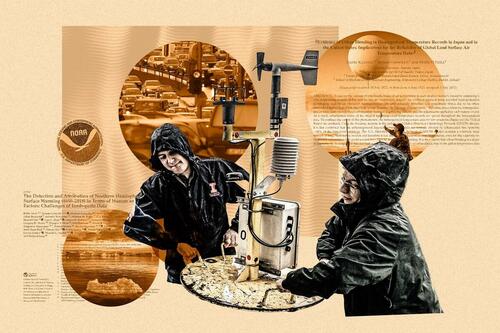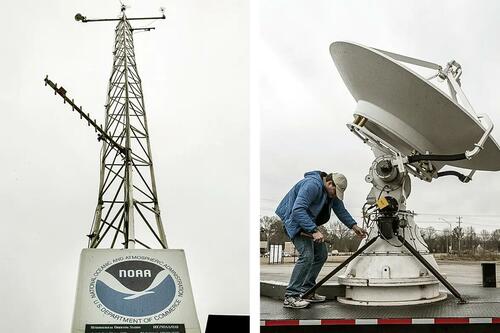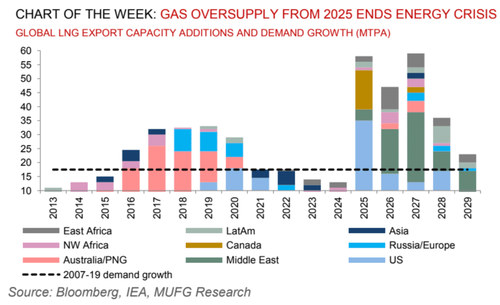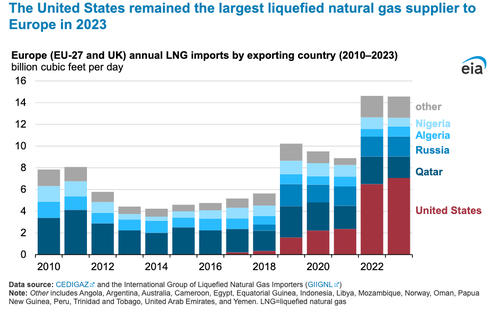Yesterday, we detailed the leak of a wiretapped telephone conversation in which senior German officers discuss the use of German Taurus missiles, training, the capabilities of this system and the possibility of destroying the Crimean bridge.
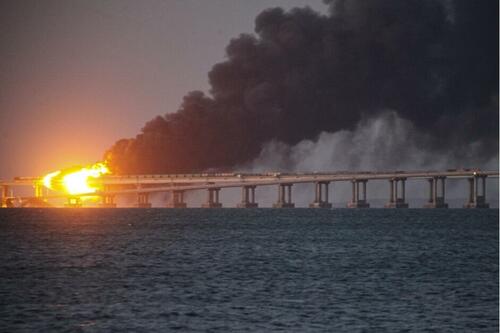
They revealed many interesting facts. Embarrassing for the Germans, who have now launched an investigation…
As The FT reports, German chancellor Olaf Scholz has promised a full investigation after Russia published a recording of a phone call between senior German air force officers in which they appeared to discuss supplying missiles to Ukraine.
Speaking on the sidelines of a meeting with Pope Francis in Rome, Scholz described the incident as a “very serious affair”.
“It will be investigated very carefully, intensively and quickly,” he said.
“It is also necessary to do so.”
Politicians from parties in Scholz’s coalition expressed concern that Russia may have eavesdropped on other sensitive conversations, and that government communications may no longer be adequately protected.
The German defence ministry said:
“According to our assessment, a Luftwaffe conversation was tapped. We cannot say for sure whether changes were made to the recorded or transcribed version that is circulating on social media.”
Konstantin von Notz, a senior Green MP, said it must be swiftly established if the “eavesdropping scandal is a one-time event or a structural problem”.
Marie-Agnes Strack-Zimmermann, head of the Bundestag defence committee, told the news agency RND that the Russians were trying to scare Scholz off from allowing the delivery of Taurus missiles.
But the cat is out of the bag.
Adding more color to what we already know, Peter Hanseler breaks down, via Voice From Russia, the full content of the leaked call and shows how the NATO states are already knee-deep in the Ukraine conflict as active warring parties.
Participants
The following persons – some of whom were not fully identified – took part in this conversation:
Lieutenant General Ingo Gerhartz – Inspector General of the German Air Force
Link to Wikipedia

Lieutenant General Ingo Gerhartz – Image: Wikipedia
Franz Gräfe – Brigadegeneral
Link to Wikipedia.

Brigadier General Franz Gräfe – Image: Defense IQ
Two employees – Fenske and Florstädt (spelling not clear)
Members of the Bundeswehr specialists – not identified.
Purpose of the conversation
From the telephone conference it emerges that the aim of this discussion was to prepare a meeting between these participants and Foreign Minister Boris Pistorius, during which the possibilities and difficulties of using the Taurus system would be presented.

The Inspector General of the German Air Force, Ingo Gerhartz, welcomes Federal Defence Minister Boris Pistorius at Holzdorf Air Base, 12 October 2023 – Source: RT
The conversation in full length
Summary – the most important points
Preliminary remarks
Here you can read the notes that I made during the course of the interview, which lasted just under 38 minutes. The subtitles indicate the approximate time of the comments made. It is not possible to determine exactly which person said what in this conversation
The first 5 minutes
For the first 5 minutes, the conversation is a chat between the employees, who talk about private and business matters, until Gerhartz joins the conversation.
The only interesting thing is that one of the employees promises the other to send business information via WhatsApp. It seems that security is not at a high level. This attitude may also be the reason why this conversation made it into the public domain.
Minute 05:30
Gerhartz leads the conversation. Pistorius wants to get deeply involved in Taurus. Scholz is blocking it. He had been asked by a journalist whether the reason for the blocking was that this system did not work at all. That is of course not true. You have to give [Pistorius] a good presentation.
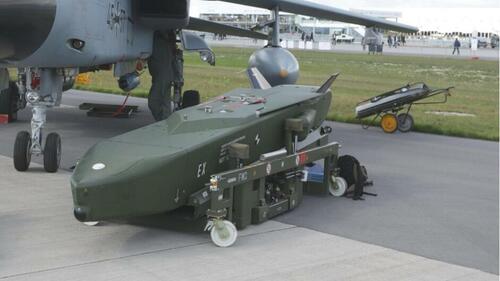
Taurus (cruise missile) – Source: Wikipedia
Minute 10:30
You don’t just have to present problems, but also solutions.
When it comes to mission planning, the British use “reachback” and then have a few people on the ground. [This probably means that the missions are planned outside of Ukraine and then implemented with people on the ground (British military personnel).
Minute 10:53
There is talk that the British on the ground [Ukraine] could support the Germans. The planning could go through MBDA [producer of Taurus] – how should that be done – question to the employees.
Minute 11:50
There are two points that are sensitive: firstly, the delivery and secondly, the adaptation of the aircraft (Sukhoi). This would take about 8 months.
Minute 13:50
The manufacturer needs about 6 months to convert Taurus for the Sukhoi or F-16.
Minute 14.23
Training on operation would be provided by the manufacturer. The Bundeswehr would take over the tactical training, which would take place in Germany and last approx. 3-4 months.
Minute 15:10
As long as the training lasted, the British could help. Databases and satellite images would come via the manufacturer. The Ukrainians have more high-tech than the German air force, so it is possible that the Ukrainians could shorten the above-mentioned time required.
Minute 17:00
Ausbildung: 3 Wochen beim Hersteller und 4 Wochen bei der Luftwaffe. Planung von Einsätzen: Wir müssen unterstützen: Unsere Leute brauchen 1 Jahr für die Ausbildung. Mit Unterstützung der Luftwaffe, 10 Wochen Ausbildung für die Ukrainer.
Minute 18:10
The support could be provided on-line from Germany.
Minute 19:00
Political risk of direct involvement: Data does not come directly from us, but via the manufacturer.
Minute 19.:20
Target data combined with satellite images must be processed in Büchel (Germany) and could then be transported by car through Poland to Ukraine [bypassing direct participation in the war].
Minute 20:15
Response time: Order to “Airborne” we would need 6 hours, if it has to be more precise than 3 meters, 12 hours.
Minute 21.15
There are already a lot of Americans walking around in civilian clothes. The Ukrainians have satellite data.
Minute 21.45
Russian air defense: We can take evasive action because we are flying low. Storm Shadow flies over waypoints – we fly around the Russian systems.
Minute 22:40
We need about 50 Taurus in the first round – that won’t change the war, even if we deliver another 50, but then we’re done, there’s no more.
Minute 23.:20
The French and British will say, now it’s your turn to deliver.
Minute 23:40
Unique selling point compared to Storm Shadow in terms of robustness, air defense and altitude. There are two interesting “target types”: firstly the bridge in the east [Crimean Bridge] and then also ammunition depots. The Crimean Bridge is difficult to reach and the pillars are small. Taurus can do that, Storm Shadow can’t.

Minute 24:25
Three routes picked out. Basically feasible with our technology. Limiting factor: SU-24.

Suchoi – SU-24 – Quelle: Wikipedia
The Ukrainians don’t have many left – it’s in the single digits [less than 10].
Pilots can be trained quickly, but training in “image planning” will not be quick [when the Taurus flies low, terrain images have to be loaded].
Minute 26:15
The Crimean bridge is as big as an airfield. You need 10-20 Taurus for that. “If we go for the pillars, we might just make a hole and then there we are. We have to give the Ukrainians all the data, otherwise it won’t work.
Minute 27:50
Bridge is extremely important for Russia – “centerpiece” – militarily and politically. No longer quite as important, as they also have the land bridge. But the Russians are still afraid of using the direct link via Ukraine. [Note: The Russians are currently expanding the railroad lines overland].
Minute 29:05
[Now it’s getting political again]. Can we use the trick of running all the data through MBDA [manufacturer] so as not to show a direct link to the Bundeswehr Ukraine? We plan the data and then drive it by car through Poland to Ukraine. It makes no difference “involved is involved”.
Minute 29:30
If we do the training properly, it takes 4 months. During this phase, we ask the British to take over. Some kind of interim solution. “Just imagine if this gets to the press”.
Minute 30.15
If the political will is there, then someone from Ukraine should come over here. If the condition is no direct involvement in mission planning, then it will take longer and the result will not be so good. Then you can’t do everything with Taurus, but that doesn’t mean you can’t do anything with it.
Minute 31.:35
Variants: “Quick-Track/Low-Track”. Quick results, such as ammunition depots, but not the bridge.
Minute 32.20
Planning to destroy ammunition depots difficult due to massive air defenses. We don’t know where the Russian air defenses are; hopefully the Ukrainians do.
Minute 33:18
If we have all the data and can use it, we can assert ourselves. The less data and training, the less assertiveness.
Minute 35.23
The longer the decision to deliver the Taurus is delayed, the longer it will take to implement. First simple targets [ammunition depots] then more complex ones [Crimean Bridge] or ask the British for support.
Conclusion
The mere fact that this telephone conversation was intercepted and has now been published raises questions.
Firstly, no one knows whether this is an isolated case or whether the Russian secret services can intercept entire sections of German or even NATO communications.
Two details that emerge from the conversation point to negligence: At the beginning of the conversation, one of the participants tells another that he will send him data via WhatsApp. If I understood correctly, this was work-related information. It also emerges from the conversation that one of the participants is conducting the conversation from a hotel room in Singapore. That’s very revealing and the German side may have been more than negligent.
It is further explained that 50 or even 100 Taurus would be delivered, but that these would have no influence on the course of the war. The question arises as to why this is even being considered – the answer is clear: marketing and politics and the absolute will to escalate.
The officers assume that between 10 and 20 Taurus cruise missiles would be needed to destroy the Crimean Bridge, as the bridge is massive and difficult to destroy. The fixation on destroying this bridge between the Russian mainland and Crimea seems almost like a mania, as the Russians are building a connection via the land bridge from Mariupol, which is a safer alternative to the Crimean Bridge.
Many parts of the conversation revolve around efforts to support the Ukrainians directly – including people on the ground – and thus to play a direct role in attacks on Russia. They are looking for solutions and “tricks” to prevent this from appearing to be the case.
It is clear from the conversation that the Americans and British are already fully, directly and locally involved in the war in Ukraine; we pointed this out a year ago in our article “Sleepwalkers at work: World War 3 has probably already begun” – now the proof is there.
Everyone involved is therefore aware that they are waging war against Russia, i.e. the NATO-Russia war is already a reality. This means that Russia is also entitled to attack NATO targets. The fact that the Russian government has not (yet) done so indicates once again that Russia is pursuing a de-escalating course, while the West is fully committed to escalation.
This leak is a complete disaster for the German government. It shows hesitation, incompetence and dishonesty. Finally, I noticed that the talks were conducted in a very uncoordinated and unstructured manner.
It would be wiser if Chancellor Scholz were to bring himself to negotiate with the Russians, because this is no way to win a war against Russia, but to do everything possible to provoke a world war. Sometimes I wonder whether there are actually people who are deliberately pursuing this goal.

